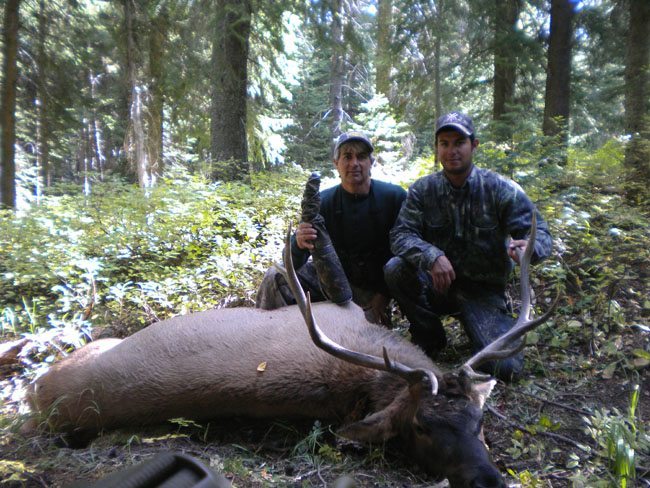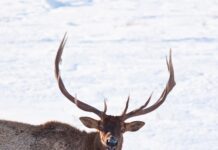CALLING QUIET ELK
By Elknut
So many times during the course of our elk hunts we will come upon situations where elk are just flat silent, especially during early season elk hunting. Yep, the elk are there but both bulls and cows show little interest in being vocal or responding to calls. With many hunters having only 5 to 7 days for their elk hunts they need to create interest or action “now.” These hunters aren’t picky: they are looking for “any elk.” They are happy with any type of bull or cow. What are some of the best ways to attract elk when elk are just not showing signs of rutting? Consider these methods:
Treestands and Ground Blinds
These are best placed at active waterholes, active wallows, heavily used trails, and natural Mineral Licks. Look for these areas close to feeding areas on morning hunts and close to bedding areas on midday or evening hunts. Coordinating the correct locations with the correct time frame you’re hunting is crucial to success. Look for fresh sign, as none of these areas will be worth a hoot if elk are not using them during your hunt. Consider bringing a trail camera or two that can do some scouting for you on trails and waterholes you don’t have time to monitor. I have found these areas are best when you find them well away from frequent foot or vehicle traffic. Get away from roads or trails just enough to be away from the earshot of hunters calling or driving. This can be ½ mile to a 1 ½ miles away, or even further. Elk in September heat especially like bedding in the coolest areas to be found. In many cases this is on the North faces with heavy cover, water, and feed nearby. Any big bench, small bench, finger ridge, or knob that faces North or partially North will offer the most comfort for hot-blooded critters like elk in the hot temps. However, these areas can be found on East, West, and South slopes as well. Aspen groves and old growth timber are a fair bet, and deserve a look. Position yourself in “destination spots.” Destination spots are areas elk will come to or go through on their own without any calling or coaxing. In these spots make sure you setup in an area where elk must be in “search mode” to find the source of your calling. Do not allow them the luxury of hanging up at distances outside your effective range, and be sure to have an obstacle between you and them that forces them to make that final approach.
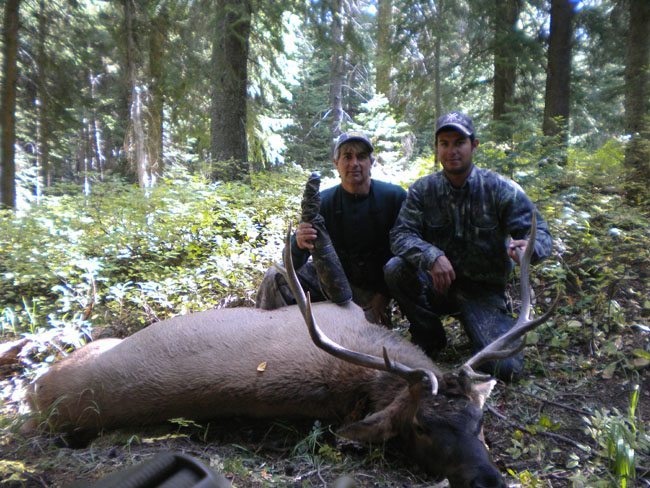
Blind or Cold-Calling Setups
What is a blind or cold-calling setup? These are setups for those cases when you haven’t seen or heard the elk in the area. In these situations, you are going to setup in an area that elk frequent, or need a reason to go into. Remember, elk are being quiet with little to no vocalization so you have to draw on their curiosity to get them to come your way. This can be effective because elk are herd animals. So how is this done? The best ways are to use sounds that mimic elk asking for aid or assistance from other elk. Elk will use these sounds year-round amongst their own ranks so it’s not unusual for them to be brought from great distances with the right sound sequence. “Trolling” for them every 1/2 mile to 1 mile using these setups will produce results. Patience is the key, as you must be willing to sit and hold your position for up to an hour after each calling session.
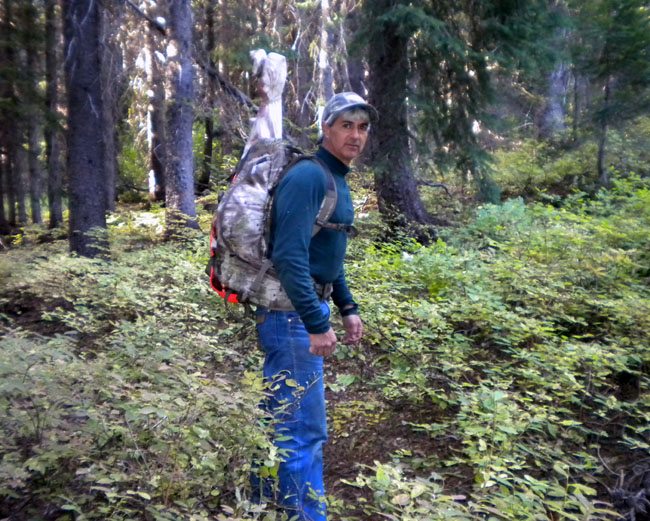
Sounds and Methods of Use in Blind or Cold-Calling Setups:
Lost or Re-Gathering Sounds
This is a far-reaching sound. Whether they were separated or just wandering looking for a group, elk use this sound to locate the group. Lead cows use these sounds to maintain contact with a moving group. These sounds are also used by bulls to give direction to cows outside the group in heavier cover. Instead of social ¼ to ½ second mews this sound is approximately 1 ½ seconds long and is given from 5 to 10 times non-stop on mid to high volume. When giving this sequence do sets of 3 to 4 in 15 second intervals. Add a nervous calf chirp with it and it can really sell your genuineness. Then sit and wait. Be very still, very patient, and on full alert as elk can come out of nowhere silently or thundering in depending on their excitement level. Lost or re-gathering sounds are great sounds to use, and my hunting crew has used this sound sequence to draw countless elk our way.
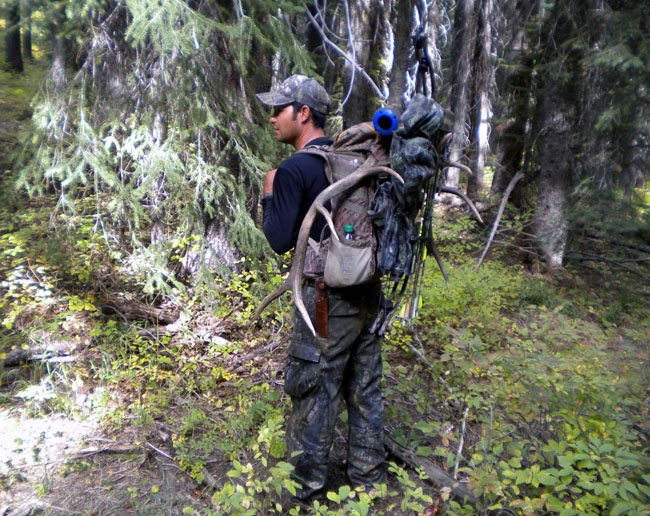
Excited Herd Talk
Excited herd talk is the most commonly used elk calling sequence known to elk hunters. It’s popular because it works! The hunter or hunters are merely representing a small band of cows and calves. In this type of calling, the sounds will vary in tone and length of mews, chirps, and whines. Throw in some foot stomping and rustling the brush. The sounds should imitate multiple elk moving and browsing. You will normally exhibit these sounds for 5 to 7 minutes, winding it up and then winding it down. Then wait 5 to 10 minutes and repeat the calling sequence three or so times. After the last sequence wait 30 to 45 minutes before moving on. Bull sounds are optional here but not needed to be effective. If you decide to inject bull sounds make it an immature bull in more of a whining bugle than a majestic one. One or two bull sounds is plenty in the course of this setup. If you have another hunter, get 30 yards or so apart from one another to promote realism to the calling. If you have 3 hunters get in a triangle about 40 yards apart in semi thick country but up to 60 yards or so in more open terrain. All 3 hunters should use cow sounds, mixing up a good range of herd talk varying pitch, tone, and volume. When an elk approaches one hunter then that hunter should stop all calling while the other two keep it up in a natural sequence. Hunters in this setup should be vigilant to notice when one hunter has gone silent, so odds are elk are approaching the silent hunter. It just takes a bit of creativity for guys to fit in and work as a team!
There are effective ways to be successful calling to quiet elk. Try some of these techniques on your next elk hunt.
ElkNut/Paul














